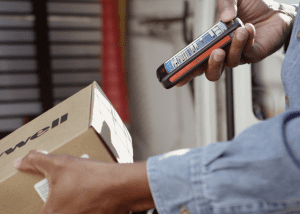Mobile Technology Innovations for Competitive Advantage
Companies in collection and delivery operations are constantly seeking new ways to differentiate themselves in an ever-changing market. Mobile computers are a key tool used by collection and delivery companies to drive competitive advantage.
Below are eight technology innovation ‘must haves’ for collection and delivery companies that are investigating new markets, with the ultimate goal of enhancing customer service and driving operational excellence.
1. The ability to perform proof of location and proof of condition applications, and provide real-time updates to customers using a single device.
2. The ability to meet time-definite service levels using ubiquitous, robust wireless communications.
3. The ability to intelligently and efficiently capture documents and images within the same bar code scanning and proof of delivery application.
4. The ability to quickly and accurately scan barcodes, even damaged codes, for faster vehicle loading and accurate delivery manifests.
5. The ability to reduce downtime and costs related to battery charging through the integration of intelligent power management for vehicle-based workers.
6. The ability to deploy devices that have been designed for durability and user comfort.
7. The ability to allow users to focus all of their efforts on the task at hand through the integration of sensors that improve ease of use.
8. The ability to manage all mobile devices from a central remote location.
Collection & Delivery Operations – Time-Critical Service Levels
The collection and delivery (C&D) landscape is diverse and encompasses a number of transport and logistics segments. Whilst segment terminology may slightly differ by region, the following sectors cover the key operations: courier express parcel (CEP), postal services, third-party logistics (3PL), freight forwarding, groupage, trucking, less than load (LTL), private fleets, and service fleets.
Common to each of these collection and delivery sectors is the high-volume, low-margin environment that drives technology investment decisions by executive management. These investment priorities are predominantly:
- First-time, on-time service-level compliance
- Reduction in fuel consumption
- Resource and fleet optimization
- Differentiating customer services
- Accurate, on-time billing
- Cash flow optimization
- New services revenue generation
- Environmental sustainability